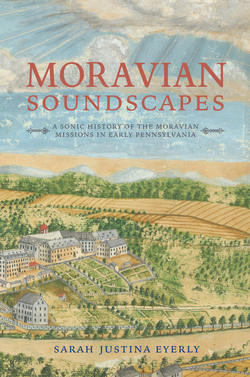Читать книгу Moravian Soundscapes - Sarah Justina Eyerly - Страница 15
На сайте Литреса книга снята с продажи.
ОглавлениеPEALE
ON A FALL AFTERNOON IN 1989, PAST THE season of rattlesnakes, I hiked into the forest near my home to a mining community that had flourished and vanished in the early twentieth century. Peale, Pennsylvania, was once home to a bituminous tunnel mine and several thousand people. It was a hub of activity and commerce, resounding day and night with voices, the groans and creaks of mine machinery, and the keynote sounds of shops, homes, and businesses. Now it lingered in the local imagination as a sketchy, silent “ghost town” lost in the woods. Few people knew how to find it. Its buildings, roads, and railroad tracks had long been subsumed under the plants and trees that quickly reclaimed the landscape. Its human soundscapes were replaced with those of the forest: birds, rustling leaves, white-tailed deer, and chipmunks. But if you knew where to look, you could still see the town’s graveyard, and the muted remnants of cherished hymn and Bible verses scrawled on tombstones.
I had been told that to locate Peale I should walk along the banks of the Moshannon Creek to where it joined a smaller run coming out of the hillside near the town of Grassflat. Like the verses that lingered on tombstones, the name of this small waterway persisted long after anyone remembered its significance: Moravian Run. I wondered about the name. Perhaps it was simply named after immigrants from the region of Moravia, as were many mining communities and places in the area that retained traces of their ethnically segregated roots. But I puzzled over its parallel with the name of the Moravian Church, the German church community that had founded Bethlehem, Nazareth, and Lititz, Pennsylvania, in the eighteenth century. There were no Moravian churches around my home, so the connection seemed highly unlikely. Still, it was a mystery that continued to intrigue me.
Less mysterious perhaps was a beautiful, secluded island in the Moshannon Creek about one mile further east of Peale. My mother called it Post’s Island, and often recounted stories of my Swedish grandfather, Morton Erickson, who loved to spear fish from the island and hunt in the forests along the Moshannon. In the late nineteenth century, when the first Swedish settlers came into the area, the waters around Post’s Island were exceedingly clear and teeming with fish, otters, water striders, and mink. White-tailed deer and elk roamed the river’s edge, and bears haunted the deeper parts of the forest. The acoustic ecology of the Moshannon forests was vibrant with animals, plants, insects, and the geophony of weather, water, soil, and rock. My grandfather was a good singer. I imagined him singing the latest gospel hymns while sitting on the banks of Post’s Island hoping to lure a fish. That was before the days of Peale and other mining communities that caused the Moshannon to run red with sulphur.
I never wondered about the naming of Post’s Island. It seemed unremarkable and rather ordinary. But many years later, I would learn about the man Post and the journey that had taken him, like me and my grandfather, along the Moshannon. I would learn of another grave that lay under the remains of Peale, never marked by a stone, which also carried the history of human settlement and passage in that place at the confluence of the Moravian and the Moshannon. It was a time when the island and the creek had received their names and when the riparian forests had echoed with the songs of even more ancient ancestors. But these were mysteries that would take many years to solve.
